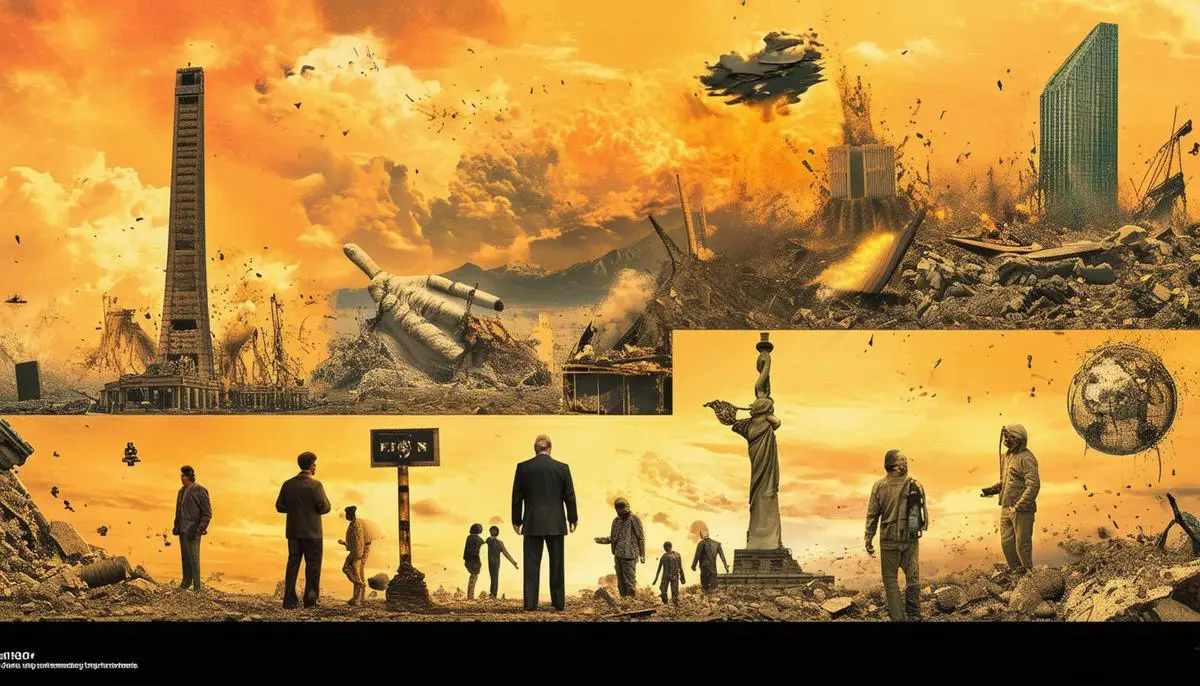Climatic Change
The Anasazi, Tiwanaku, Akkadians, Mayan, and Roman Empires all fell due to abrupt climatic changes. Droughts severely impacted agriculture, disrupting water supplies and societal stability. The Anasazi abandoned villages around A.D. 900 due to sustained dry spells. The Tiwanaku in Bolivia collapsed when Lake Titicaca's water levels dropped, rendering their irrigation systems useless.
The Akkadians faced a severe drought between 2200 B.C. and 2500 B.C., reducing agricultural production and causing migration to cities, which couldn't sustain the sudden population increase. This led to internal conflict and hastened the empire's downfall.
The Mayan civilization experienced a 41%-54% drop in annual rainfall and a 2-7% reduction in humidity, straining their farming systems. Without sufficient food reserves to counter multiple droughts over centuries, Mayan society fractured and their cities were abandoned.
The Roman Empire's reliance on steady crop production made even slight climate changes problematic. A drop in wheat and alfalfa yields, due to environmental changes and shifting weather patterns, reflected falling Energy Return on Investment (EROI). Rome's agricultural heartland faltered, unable to sustain the population or economy.
Impact of Climatic Shifts on Civilizations:
- Reduced food production
- Fertile lands turning barren
- Physical and socio-economic effects of reduced water supply
- Increased conflict
- Large-scale migrations
Societal stability depends on consistent agricultural yields and adequate water supplies. Disruptions in these areas can lead to collapse. Studying these ancient collapses may provide insights for addressing current climate change challenges.
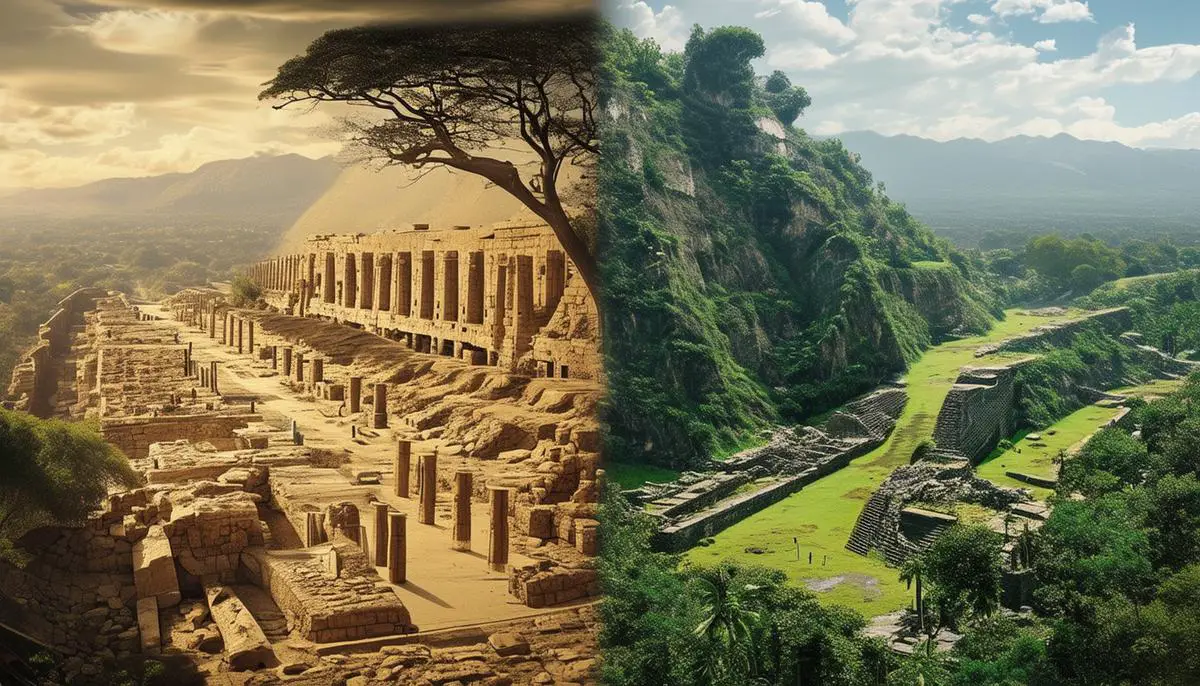
Environmental Degradation
Exceeding an environment's carrying capacity can lead to collapse through a series of degradation events—excessive deforestation, water pollution, soil degradation, and loss of biodiversity.
The Khmer civilization of Cambodia (9th to 14th centuries) developed extensive hydraulic systems for agriculture, but their exploitation became unsustainable. Deforestation led to soil erosion and nutrient depletion, impacting crop yields and ultimately leading to the abandonment of structures like Angkor Wat.
Rome experienced similar consequences. Deforestation for farmland and urban expansion degraded soil quality, leading to declining crop yields. The Empire's dependence on grain from distant provinces became problematic when environmental mismanagement in these territories strained trade networks.
The Maya civilization faced similar issues with aggressive deforestation for agriculture and construction, leading to soil erosion and loss of arable land. As the land became less productive, famines became frequent, causing societal upheaval.
Water pollution contributed to the fall of the Indus Valley civilization (3300 B.C. to 1300 B.C). Contamination of water sources with urban runoff and waste compromised public health and agricultural viability.
The Greenland Norse collapse around the 15th century demonstrates the fragility of human settlements in the face of environmental changes. The Norse settlers failed to adapt to changing climatic conditions and overexploited the fragile arctic ecosystem, leading to soil erosion and decreasing productivity of their pastures.
Loss of biodiversity also rendered ecosystems less resilient, as seen with the Anasazi, who faced stress partly due to overhunting.
"These historical examples highlight the importance of balancing growth and sustainability to avoid repeating cycles of environmental degradation and societal collapse."
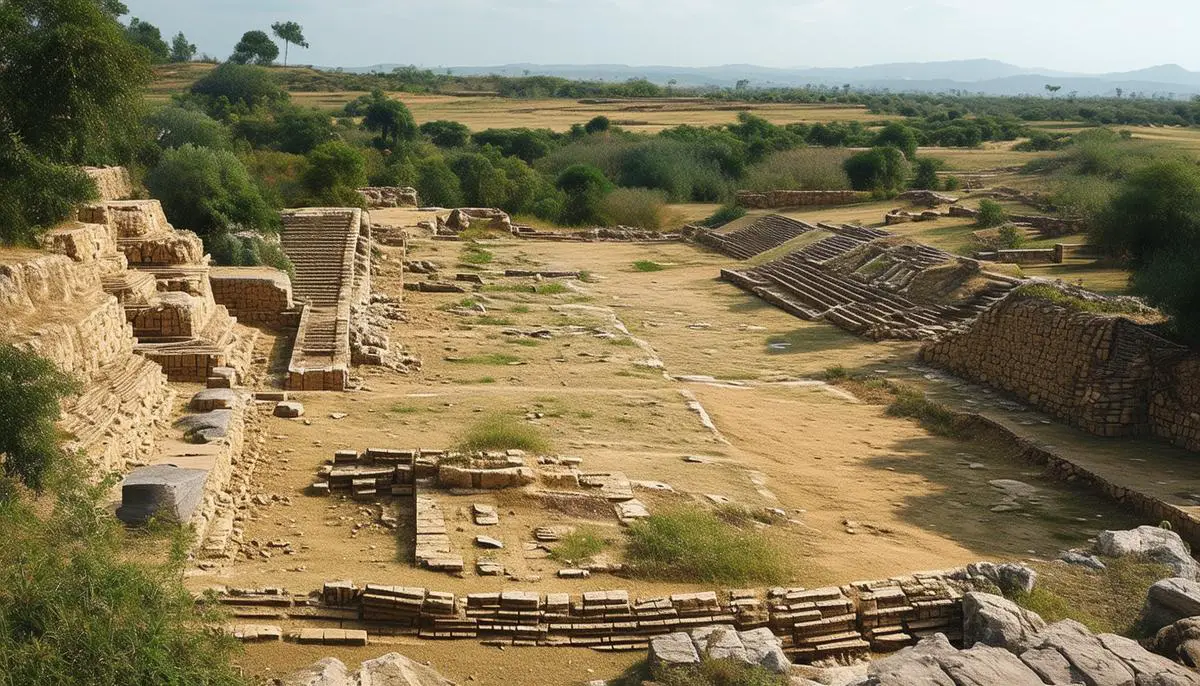
Inequality and Oligarchy
Wealth and political inequality, coupled with the centralization of power, can precipitate societal breakdown by disrupting unity and compromising a society's ability to respond to challenges effectively.
The late Roman Empire exemplifies this issue. Extreme wealth concentration among the elite contrasted with widespread poverty, eroding trust in the central government. As conquests waned, fewer slaves were available to fuel the economy, stressing agricultural and industrial sectors and fostering unrest.
The pre-colonial Hawaiian civilization also experienced this pattern. The aliʻi (chiefs) centralized power and amassed wealth, relegating commoners to deprivation. This extreme disparity eventually stoked discontent and rebellion, making the civilization vulnerable to external shocks.
China's Zhou Dynasty faltered as central authority diminished and power concentrated among feudal landlords. This created socio-political fragmentation, destabilizing state infrastructure and hindering unified defense against external threats.
The Mamluk Sultanate of medieval Egypt grappled with wealth concentration and political centralization. Such disparities bred corruption and inefficiency, degrading public services and weakening societal cohesion. This made them vulnerable to external pressures, notably from the Ottoman Empire.
Statistical analysis shows that wealth and political inequality tend to correlate with higher rates of political violence. As population increases and labor supply outstrips demand, wages decline and social unrest rises, often culminating in revolts and societal breakdowns.
Modern parallels exist in 20th century Latin American countries like Venezuela and Argentina, where extreme inequities led to cyclical political violence and governmental instability.
Understanding the role of wealth concentration and political centralization is crucial. Historical precedents reveal that unaddressed disparities can weaken social resilience and amplify vulnerabilities to internal and external pressures. Modern societies must strive to mitigate inequalities to foster stability and longevity.
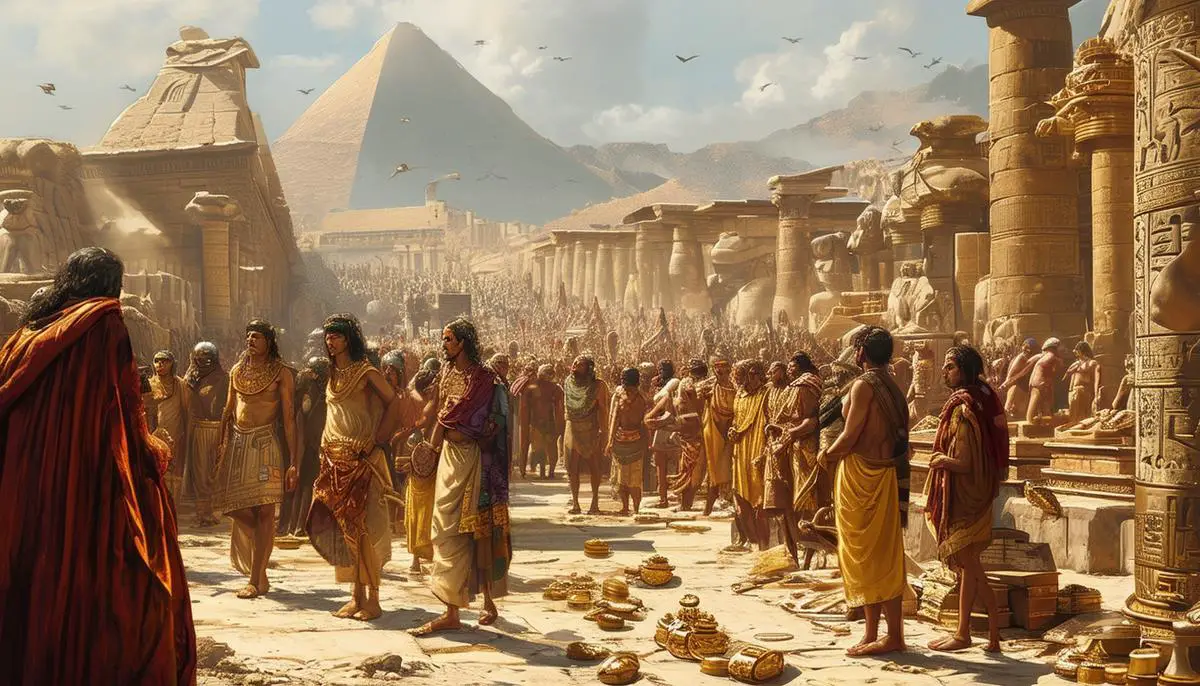
Complexity and Bureaucracy
Societies often struggle under the weight of accumulated complexity and bureaucracy, as theorized by historian Joseph Tainter1. This paradigm suggests that human collectives increase in complexity to solve problems, but eventually reach a point where the returns on this complexity diminish.
The Roman Empire exemplifies this pattern. Initially, layers of administration facilitated efficient communication, tax collection, and military management. However, as Rome grew, the complexity of its institutions outpaced their utility. The costs of maintaining vast bureaucratic networks began to outweigh the benefits, slowing decision-making processes and reducing responsiveness to threats.
The Western Zhou Dynasty experienced a similar pattern. As regional power grew, the central authority expanded its bureaucracy to maintain control. This led to increased friction and inefficiency, draining resources and weakening central authority.
This phenomenon extends to environmental sustainability through the concept of Energy Return on Investment (EROI)2. As societies evolve, they first exploit easily accessible resources with high EROI. Over time, these resources deplete, forcing societies to turn to more challenging and energy-intensive options, reducing EROI.
EROI Decline in Ancient Civilizations:
- Ancient Rome: Initially benefited from vast tracts of fertile land and easily accessible minerals. Later relied on importing grain from distant provinces and mining from less accessible regions.
- Maya Civilization: Faced dwindling accessible fertile land and increasingly difficult-to-sustain sophisticated agricultural systems.
Modern societies face similar challenges with declining fossil fuel reserves and the transition to renewable energy technologies, which currently offer lower EROI.
Understanding the limits of complexity and the role of EROI in societal sustainability offers valuable insights. Balancing growth with efficiency and pursuing innovation to maintain higher EROI levels are crucial challenges for modern societies to avoid the pitfalls that led to the downfall of historical civilizations.
External Shocks
War, natural disasters, famine, and plagues have historically acted as catalysts for societal collapse, often interacting to amplify their impacts.
War has repeatedly destabilized civilizations. The Aztec Empire's downfall, accelerated by Spanish conquerors exploiting internal divisions, exemplifies this. Early agrarian states also suffered from constant raids by nomadic tribes, which disrupted their societal structures.
Natural disasters like earthquakes, tsunamis, and volcanic eruptions have caused sudden destruction. The eruption of Mount Vesuvius in 79 AD buried Pompeii and Herculaneum, while the Thera eruption around 1600 BC significantly undermined Minoan civilization.
Famine, often resulting from climatic changes or war-induced disruptions, erodes food security. The Great Famine of 1315-1317 in Europe led to widespread starvation and social unrest, challenging societal norms.
Plagues have had far-reaching impacts. The Black Death in 14th century Europe killed an estimated one-third to one-half of the population, leading to massive demographic shifts and socio-political upheavals.1
These factors often combined in fatal sequences. The Justinian Plague (541-542 AD) coincided with military campaigns and climatic cooling, hastening the Byzantine Empire's contraction.
Understanding these external shocks offers critical insights for modern societies. Building resilience against natural disasters, maintaining strong food systems and health infrastructure, and mitigating conflict are interconnected strategies to avert collapse.
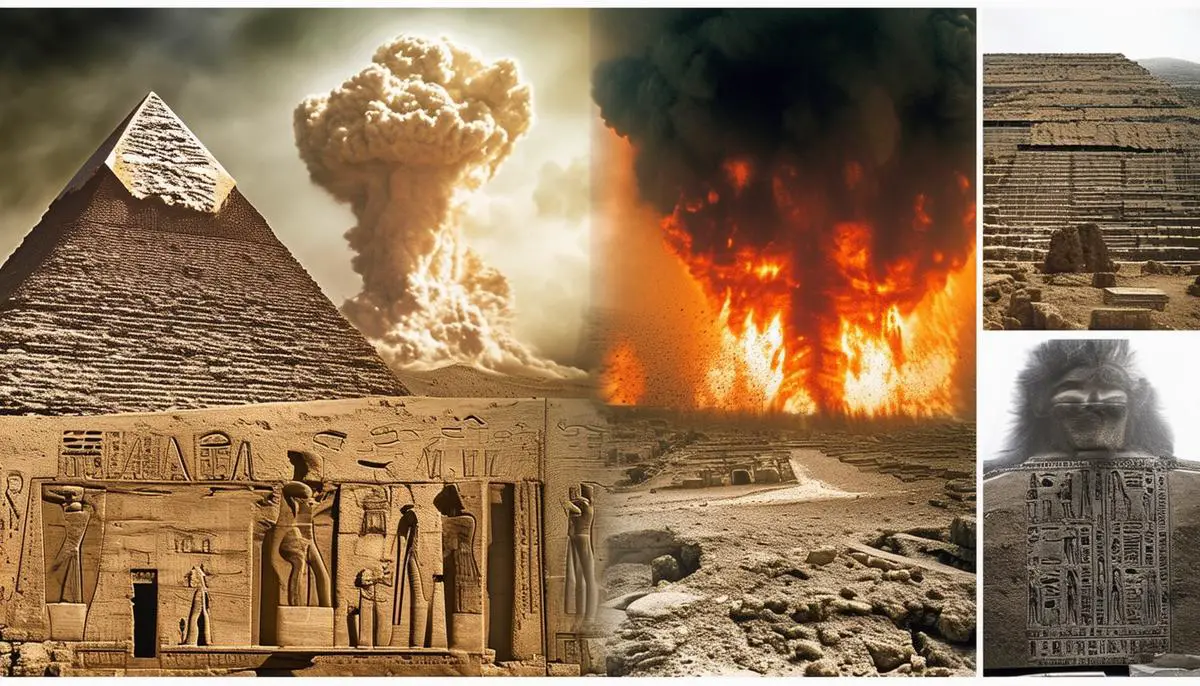
Randomness and Bad Luck
Randomness and bad luck play significant roles in the collapse of civilizations, sometimes overshadowing deliberate human actions. This concept echoes the Red Queen Effect from evolutionary biology, suggesting that in a constantly changing environment, civilizations must continually adapt to survive.
Statistical analyses reveal that the probability of collapse does not necessarily correlate with the age of a civilization. Sudden, unforeseen events can catalyze downfall at any stage of development.
- The Indus Valley Civilization's abrupt disappearance, despite its advanced urban planning and water management systems, may have been influenced by random factors like unexpected floods or unrecorded epidemics.
- The Roman Empire's fall was exacerbated by unpredictable disasters like the Antonine and Cyprian plagues, which decimated populations and strained resources.
- Random social and economic shifts within a civilization can have profound impacts. The tulip mania in 17th-century Holland, a speculative bubble, caused widespread economic turmoil.
Understanding the role of randomness highlights the importance of resilience and adaptability in societies. Civilizations must develop systems capable of absorbing shocks, diversifying resources, and fostering unity amidst uncertainty.
Modern societies must be vigilant due to the interconnectedness of today's global economy and technology. Ensuring resilience against unforeseen events, fostering innovation, and maintaining socio-economic flexibility are crucial strategies to mitigate the risks posed by randomness and bad luck.2
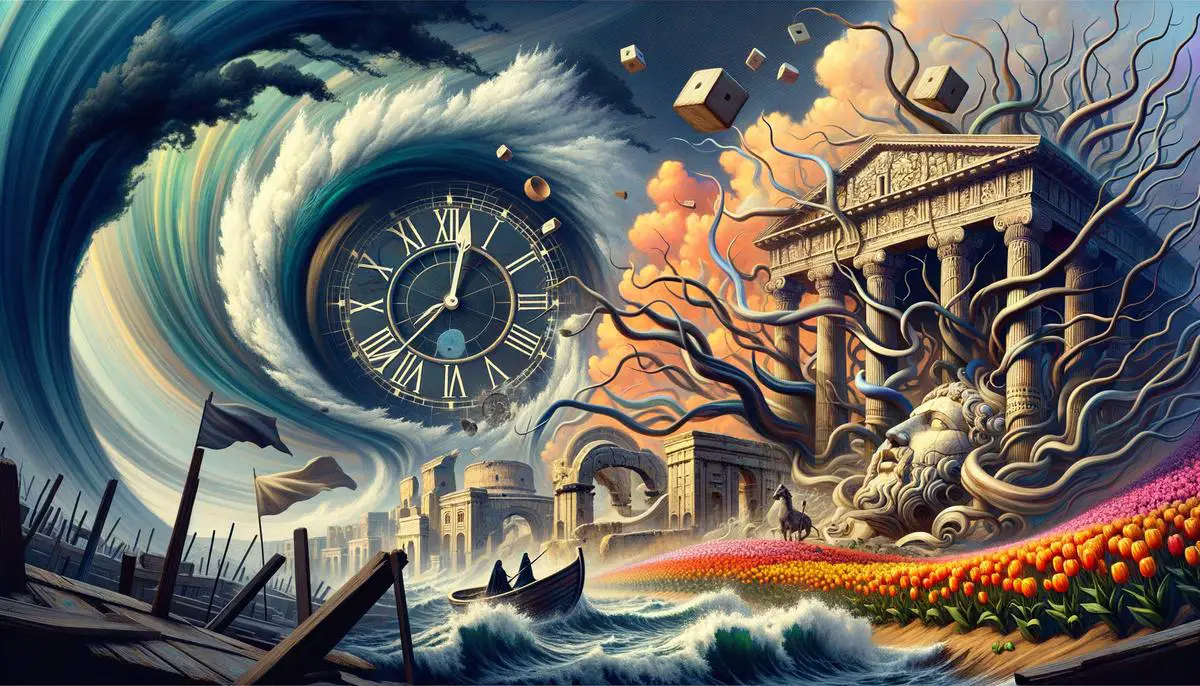
Understanding the factors that lead to the collapse of civilizations underscores the importance of learning from history. By examining past failures, we can better prepare for future challenges, fostering resilience and adaptability in our societies.
![]()
